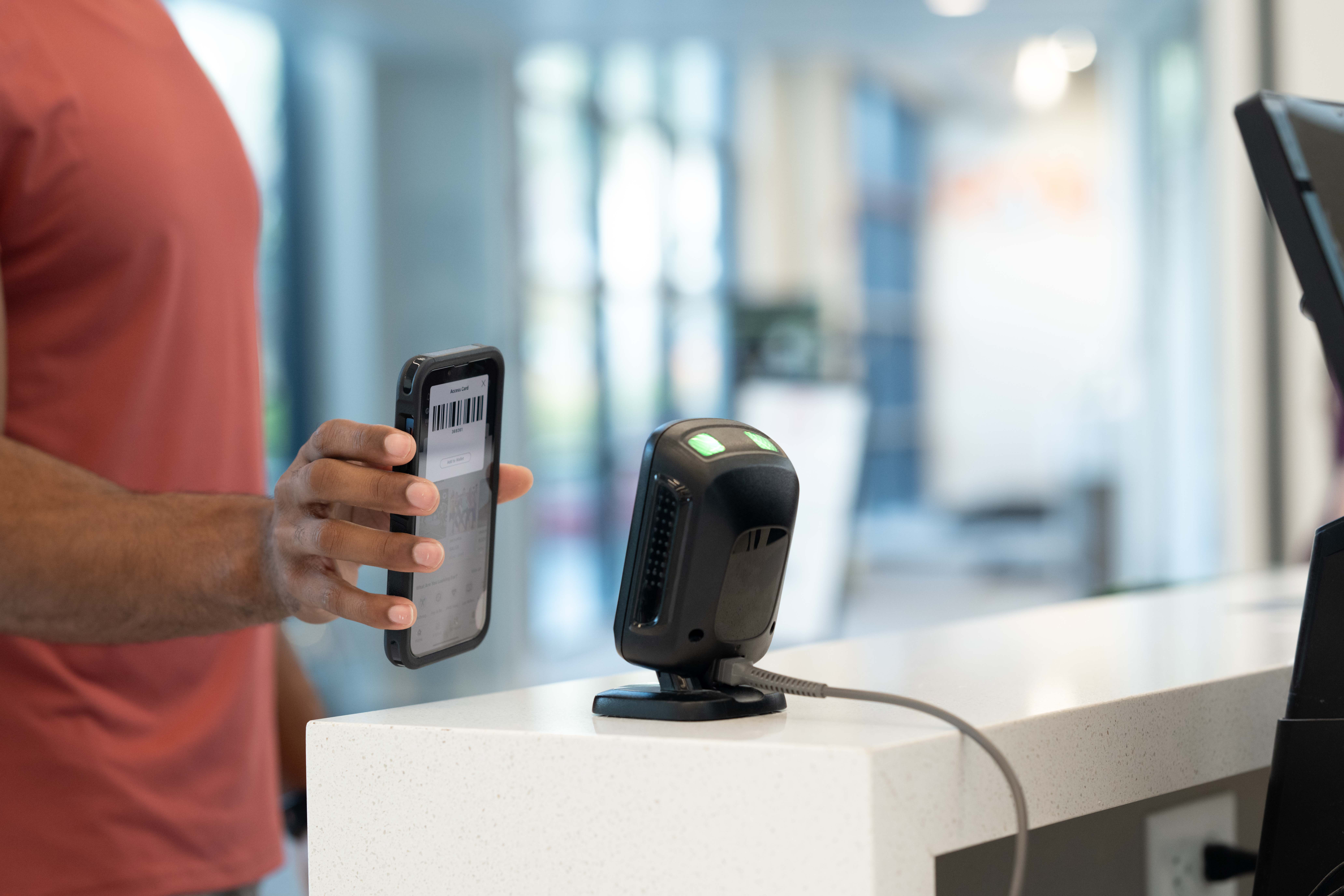Fitness Marketing Tips – Advanced PPC Tips and Conversion Tracking

Over the past several weeks, we’ve focused on providing tips and insights into PPC advertising, to help you set up your own PPC marketing campaign promoting your fitness business. Today, we will close out our SEM blog series for fitness businesses by providing more advanced PPC tips to help you increase clickthrough-rates (CTRs) and track conversions.
Exploring Ad Extensions
Now that you have a good idea of which search results are paid ads and which ones are organic, you’ve probably started paying more attention copy within these ads. You might have started looking at different calls-to-action your competitors are using, and you might have even noticed that some ads contain additional links or text that fall outside of the regular ad text. These are considered ad extensions, which are a type of ad format that display additional information about your business.
Ad extensions are a great way to enhance your existing ads with little effort. They provide improved visibility, as Google will typically rank an ad higher if it has these extensions than ads that don’t have them. These extensions can also improve the overall clickthrough-rates of your ads. Most importantly, ad extensions give you additional space to provide more information about your fitness business, which will allow you to better differentiate your ads from competitors and take up additional real estate in the search results.
There are several different types of ad extensions that would likely make sense for your fitness business campaigns. The best part about ad extensions is that you can have more than one. Read through the following ad extension options to determine what would work best for your campaigns.
Sitelink Extensions
Sitelinks are probably the most popular ad extension, as they’re easy to implement and usually have a significant impact on ad performance. Google reports that on average, ads with sitelinks typically have a clickthrough rate that’s 30% higher than ads without this extension. There are two different types of sitelinks available, regular sitelinks and enhanced sitelinks.
Regular sitelinks provide advertisers the option to have additional lines of linked text appear underneath their ads. Similar to ad headlines, the character limit for this line of text is 25. This is a great opportunity to provide links to additional pages on your site that you think would be beneficial for searchers to land on. Ideas for quality pages to link to would be pricing, class schedule, about us, etc. I recommend adding between four and six sitelinks, depending on how many additional quality pages you have on your site. Below you will find an example of how regular sitelinks appear with an ad.

Enhanced sitelinks work similarly to regular sitelinks, but provide advertisers with a lot more copy to entice users to click on these additional links. Enhanced sitelinks are essentially additional ads that appear underneath the main ad. This means that you can add between four to six additional ads (with headlines and body copy that have the same character limits as regular ads) underneath your main one. As you can expect, these helps your ads take up a decent amount of real estate in the search results. The only difference between enhanced sitelinks and regular ads is that you do not have display URLs in the enhanced sitelink. Below you will find an example of what an ad with enhanced sitelinks looks like.
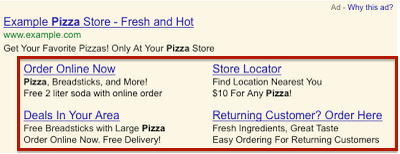
Location Extensions
For local businesses, a location extension makes a lot of sense. This extension allows you to include location information about your fitness business in your ad text, including your address, phone number and a map marker. Location extensions can encourage searches to visit your business in person and enables you to target your ads around your business address. An added benefit is that ads with location extensions typically see a 10% increase in clickthrough-rate. Below are examples of how location extensions appear in the regular search results and on Google Map search results.
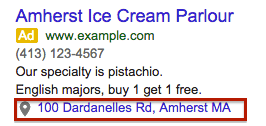
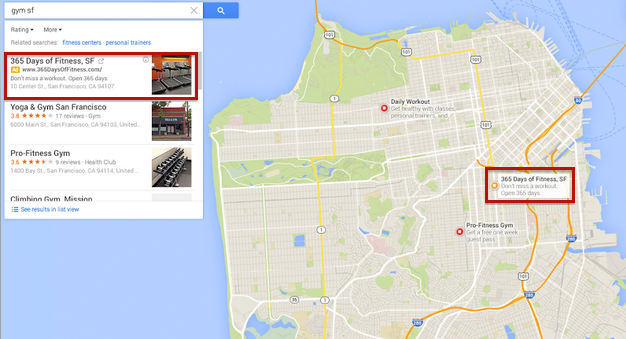
Call Extensions
Is a main goal of your PPC program to get more phone calls to your business? Do you feel like you have a better chance of closing a prospect if you can get them on the phone? If so, you might want to try call extensions in your PPC ads.
Call extensions enable you to add your phone number within your PPC ads, and on mobile devices, you can have a click-to-call button appear in your ads. This click-to-call button will allow mobile searchers to call your business directly by clicking on your ad. Google reports that ads with call extensions typically see an increased clickthrough-rate of 6 to 8%. Please note that you should only implement call extensions if you have someone available to take calls throughout the day.
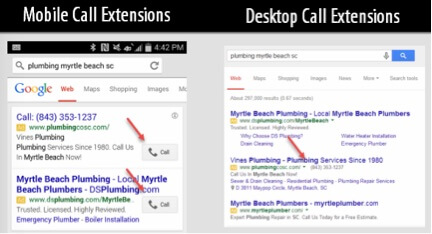 Callout Extensions
Callout Extensions
The final ad extension that I recommend adding to your accounts is easy-to-implement and very effective. Callout extensions let you include additional text about your business, such as popular or unique aspects of your business or a promotion for a limited time offer, below your ad. These callouts are 25 characters each and Google typically displays between three and four callouts with an ad.

Measure Success by Tracking Conversions
While it’s important to maintain strong CTRs, low CPCs and a high average position, there’s much more to campaign success beyond measuring these metrics. If you’re spending a ton of money on PPC but aren’t monitoring what users are doing once they’ve arrived on your site, can you really prove that your program is working?
I personally believe that tracking conversions, whether through AdWords or Analytics, is vital to proving the success of your PPC program. You want to make sure that users are taking a certain action after clicking on your ad (remember how you included a call-to-action in each one of your ads?), rather than clicking on your ad and not doing anything on your site. Good examples of actions you might want a user to take include:
• Filling out a Request More Information form
• Downloading an eBook or guide
• Signing up for a free class
• Calling your business
You can track these different actions from each keyword and ad click within AdWords. To setup conversions in AdWords, simply click on the Tools link in the top navigation, then click on the Conversions link in the dropdown. Once on the conversions page, click the red +Conversion button. You will be taken to a screen where you can choose where you want to track conversions, which will likely be your website or phone calls. For this example, we’ll go with your website. You’ll be taken to a screen where you’ll define your conversion.
• Name: give your conversion an easy to remember name (if you’re tracking sign ups for a free class, name it something straightforward like, “Free Class Signup”).
• Value: you have the option to assign a value to each conversion to show how much it’s worth to your business. Feel free to add any values you find appropriate here, or simple select “Don’t assign a value” if you just want to track the total number of occurrences for this conversion (that’s what I typically do).
• Count: If you’re tracking more than one conversion, you might only be interested in seeing the total number of people that converted on your site, versus the total number of users that completed multiple conversions while on your site. If that’s the case, then you’ll want to select a Unique count to only see one conversion per visitor.
• Conversion windows: In this section, you will choose how long you’d like to track conversions from a visitor for. This is helpful because some users might click on an ad, and not complete a conversion during their first visit. That user might then come back a week or two later to complete a form.
• Category: This is where you’ll select what type of conversion you’re tracking. The options include: Purchase/Sale, Sign-up, Lead, View of a key page and Other.
Once you hit Save and Continue, you will be taken to a screen to review your conversion, and will be provided a snippet of code to install on your site. It’s important to note that this snippet of code needs to be installed on the page that the actual conversion occurs on. For example, if you’re tracking free class signups from a form, your snippet of code would need to be on the page that loads after someone fills out the form (likely a Thank You page). Every time a user hits the page with the conversion code, a conversion will be tracked. Also, if you do not install the code, AdWords will not be able to track conversions.
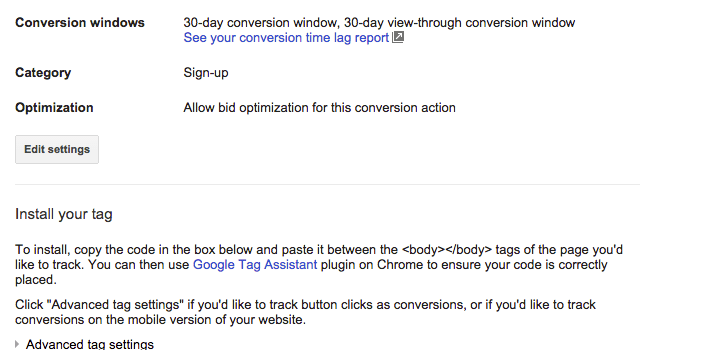
Once you’ve installed your code, you can begin viewing conversions from your campaigns within AdWords. To add conversion columns to your campaign view, simply click on the Columns drop down and click Modify Columns. Under “Select Metrics”, click on the Conversions link to view the different conversion metric columns you can add to your view.
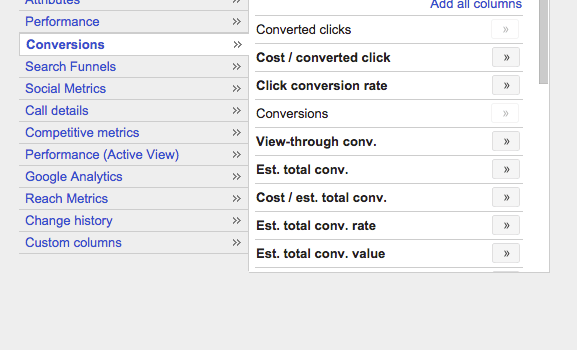
There you have it, you know have all the information needed to build out competitive campaigns and track PPC performance beyond basic metrics. We really hope you have found our SEM blog series helpful, and we hope that you’ve taken learnings from these blogs to expand the marketing plan for your fitness business. If you have developed a keyword list and optimized your website or setup an AdWords Express account, share your success stories with us below! We look forward to hearing about how your fitness business is growing through a strong and strategic search engine marketing program!
Still looking for ways to grow your marketing plan? We have the perfect guide for you. Download our free, comprehensive PPC Marketing for Fitness Businesses eBook.
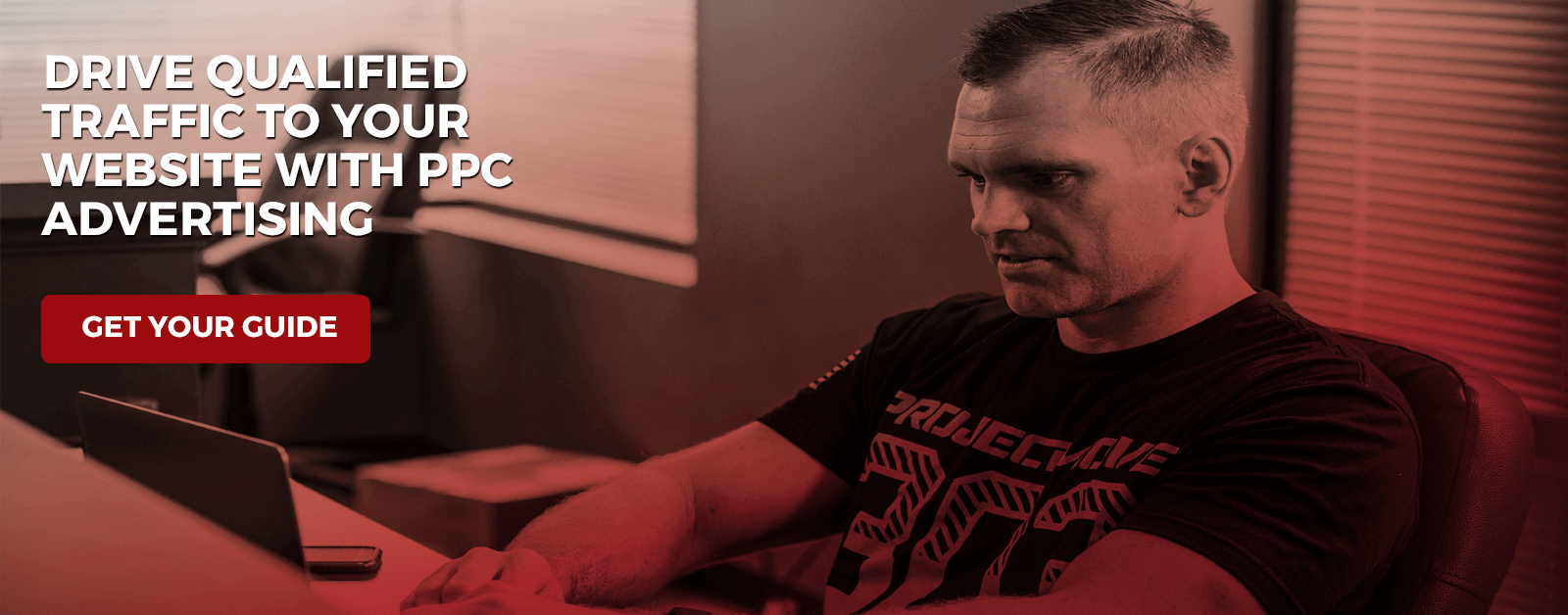

I’m Coach Kelli, a devoted CrossFit gym owner with 15 years of experience managing my facility, along with owning yoga studios and wellness centers. Beyond the fitness world, I have a passion for cooking, cherish moments with my children and family, and find joy in spending time outside. Having experienced the highs and lows, I’m dedicated to leveraging my expertise to help you grow and succeed on your fitness journey.

I’m Coach Kelli, a devoted CrossFit gym owner with 15 years of experience managing my facility, along with owning yoga studios and wellness centers. Beyond the fitness world, I have a passion for cooking, cherish moments with my children and family, and find joy in spending time outside. Having experienced the highs and lows, I’m dedicated to leveraging my expertise to help you grow and succeed on your fitness journey.

